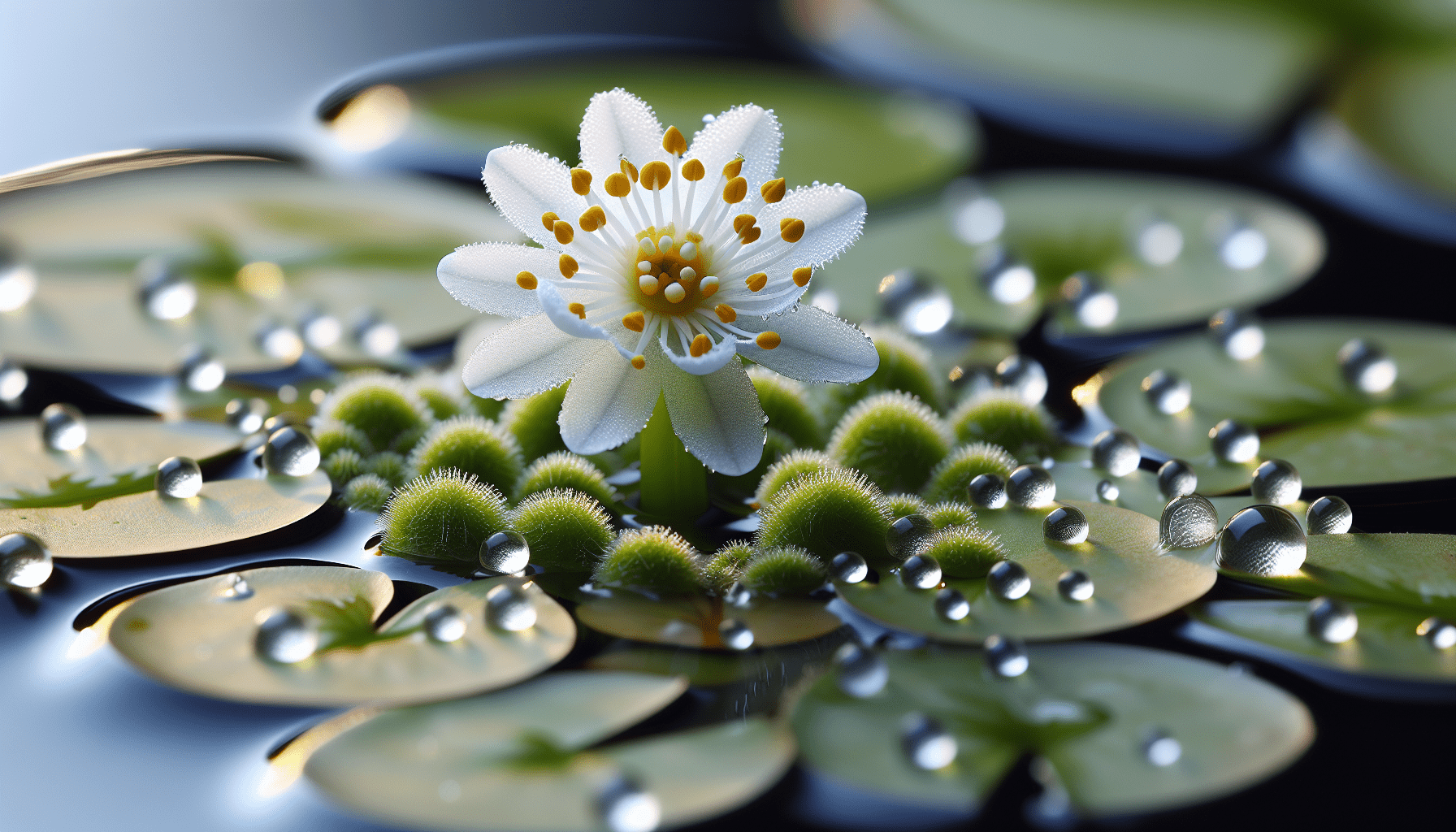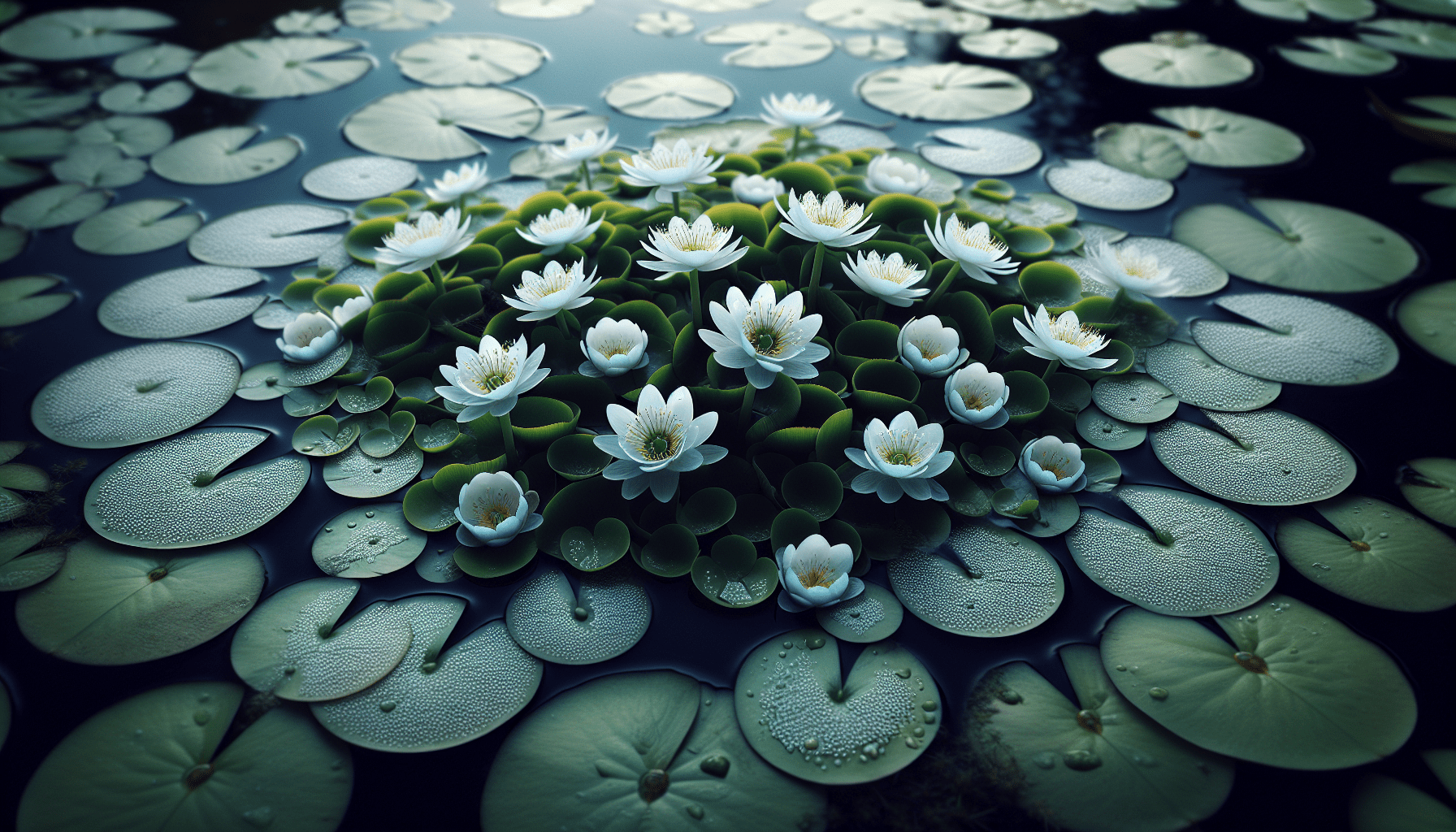As you explore the diverse world of aquatic flora, you might encounter the unique aquatic plant known as Nymphoides crenata. This intriguing plant forms a vital part of wetland ecosystems, displaying fascinating biological characteristics and adaptations that suit its underwater environment. This article will offer you a comprehensive understanding of what Nymphoides crenata is, including its scientific classification, morphology, ecological significance, as well as the roles it plays within its ecosystem.
Overview of Nymphoides Crenata
Nymphoides crenata belongs to a group of unlided aquatic flowering plants; it is a species that grows in fresh water bodies and moist environments, demonstrating a preference for still or slow-moving waterbodies.
Definition of Nymphoides Crenata
Nymphoides crenata, often referred to as water snowflake or the crenate marshwort, is a perennial aquatic plant characteristically adorned with small, round, floating leaves and delicate white to light yellow flowers. It belongs to the Menyanthaceae family, comprising nearly 50 species of aquatic and marsh-dwelling plants known for their ornamental qualities.
Habitat and Distribution
Nymphoides crenata is native to Eastern Asia, with a distribution range extending from India and Sri Lanka to Japan, and southwards to northern Australia and the Pacific Islands. It is found primarily in swampy environments, ponds, and shallow, slow-moving waters. The species exhibits a particular fondness for rich, loamy or sandy soil that is permanently or seasonally submerged or excessively wet.
Physical characteristics and distinguishing features
Nymphoides crenata is characterized by its round, scalloped-edge leaves that float on the water surface, akin to a small water lily. These leaves are typically green, with a reddish or purplish underside in some species. The plant bears buoyant stems upon which the bright, fringed flowers emerge in clusters. Although predominantly white, the flowers can vary from light yellow to pink. The aquatic plant has an adaptive rooting system that can grow in the muddy bottom of water bodies or in waterlogged soil, enabling it to anchor itself and multiply effectively.
Scientific Classification of Nymphoides Crenata
To understand Nymphoides crenata within broader biological classifications, it’s important to review its position within the taxonomic hierarchy.
Domain
Nymphoides crenata falls within the Eukaryota domain, denoting that it consists of eukaryotic cells which have distinct nuclei enclosed within membranes.
Kingdom
Nymphoides crenata belongs to the kingdom Plantae, which constitutes multicellular, photosynthetic organisms.
Phylum
Within the kingdom Plantae, Nymphoides crenata is classified under the phylum Tracheophyta, recognising it as a part of the vascular plants group, with specialised tissue for water transport.
Class
The plant falls under the class Magnoliopsida, commonly known as dicotyledons, characterized by two embryonic leaves or cotyledons.
Order
Nymphoides crenata belongs to the order Asterales, comprising flowering herbs, shrubs, and trees that bear composite flowers.
Family
The aquatic plant is part of the Menyanthaceae family, a small group of aquatic and marsh plants.
Genus
Within the Menyanthaceae family, this species falls under the Nymphoides genus, distinguished by floating leaves and solitary flowers.
Species
Finally, the species designation crenata refers to this specific type of aquatic plant, deriving its name from its unique crenate, or scalloped, leaf margin.

Growth and Development
Understanding the growth cycle and development of the Nymphoides crenata is pivotal in promoting its healthy growth and sustainability.
Growth Rate
Nymphoides crenata is typically a fast-growing species, quickly colonizing shallow waters once conditions are conducive. The speed of its growth makes it a popular choice among hobbyist aquarists and water garden owners.
Typical Lifespan and Maturity
Nymphoides crenata is a perennial aquatic plant, meaning that under proper conditions, it can live for an extended period, often more than two years. It commonly reaches maturity and begins to flower in its second year.
Reproductive and Seed Development
Reproduction in Nymphoides crenata is largely asexual, occurring primarily by fragmentation and the production of floating stolons. However, sexual reproduction is also present, with the production of hermaphroditic flowers leading to self-fertilization or cross-pollination. The seeds are tiny, endowed with a gel-like coating aiding in their dispersal by water movements.
Ecological Importance
In the greater aquatic ecosystem, Nymphoides crenata carries substantial importance for flora and fauna alike.
Role in Aquatic Ecosystems
Nymphoides crenata plays a pivotal role in maintaining biodiversity within aquatic ecosystems. Its dense growth provides shelter and spawning grounds for various aquatic creatures, while its leaves provide grazing material for herbivorous fauna. The plant also contributes to oxygenation and nutrient cycling in the water.
Beneficial to Aquatic Fauna
Beyond offering shelter, the plant serves as a substrate for egg-laying among various fish species and invertebrates. Moreover, the leaf litter and detritus from the plant provide food for a variety of microorganisms, nourishing the base of aquatic food chains.
Implication for Water Quality
Nymphoides crenata, like many aquatic plants, helps improve water quality by absorbing excess nutrients, particularly nitrogen and phosphorous. This assists in reducing algal blooms and impacts water clarity positively.

Cultivation and Care
For optimal cultivation, Nymphoides crenata requires certain conditions and attention.
Preferred growth conditions
This species prefers still or slow-moving waters, rich nutrients, and full to partial sunlight. In terms of temperature, Nymphoides crenata is hardy and can tolerate a range of conditions, although it tends to thrive in moderately warm climates.
Common pests and diseases
While Nymphoides crenata is generally resistant to most pests and diseases, overgrowth can sometimes lead to rot, particularly in situations where light or nutrient availability becomes limiting.
Propagation Methods
Nymphoides crenata propagates efficiently through fragmenting and creating stolons, which grow into new plants. Cultivators often divide mature plants or separate daughter plants for propagation purposes.
Practical Uses for Humans
Nymphoides crenata serves various beneficial purposes in human environments.
As Ornamental Plants
The beautiful, lily-like appearance of this plant makes it a popular choice for water gardens and ornamental ponds. Its dainty flowers are not only aesthetically pleasing but are also known to attract pollinators such as bees and butterflies.
In Aquariums
Being a fast grower, Nymphoides crenata helps in maintaining a balanced aquatic ecosystem within aquariums. Moreover, its lush, floating foliage provides a natural aesthetic in aquatic landscapes.
In Water Gardens
In water gardens, the plant adds to the variety and texture of plants, creating depth and visual appeal. It quickly covers the water surface, providing shade and a natural filtration mechanism for water gardens.
Medicinal Uses
Historically, Nymphoides crenata has been used in traditional medicine for the treatment of various ailments. However, scientific substantiation of these claims remains limited and more research is needed to validate these medicinal properties.
Nymphoides Crenata in Culture and Symbolism
The cultural reflection and symbolic resonance of Nymphoides crenata can be intriguing.
Cultural Significance in Different Societies
In many Asian societies, the Nymphoides crenata holds cultural significance due to its ornamental appeal and its use in traditional medicine. It is often cultivated in man-made ponds in temples and gardens, signifying purity and tranquillity.
Symbolism and Folklore
In folklore, Nymphoides crenata is sometimes thought of as a symbol of purity and peace, due to its pristine white flowers and calming, water-based habitat. The floating leaves and flowers have also been likened to stars on the surface of the water, attaching a celestial symbolism to the plant.
Impact of Climate Change and Human Activities
The potential ramifications of anthropogenic impact and climate change on Nymphoides crenata can be critical.
Impacts on distribution and populations
Climate change presents significant ramifications for Nymphoides crenata. Rising temperatures and fluctuating precipitation patterns could affect its growth and reproductive patterns, potentially leading to shifts in its geographical distribution.
Conservation Status and Threats
Although Nymphoides crenata has a large distribution range and is not currently under major threat, increased water pollution and habitat loss due to human activities pose long-term concerns for its conservation.
Efforts for Preservation
Efforts to preserve and propagate Nymphoides crenata include monitoring its habitat, preventing pollution, and implementing conservation strategies. Propagation in controlled environments also aids in preserving this species.
Invasive Species and Control Measures
While Nymphoides crenata is a native species in many regions, it can become invasive under certain conditions.
Nymphoides Crenata as an Invasive species
In some areas outside its native range, Nymphoides crenata can become invasive due to its rapid growth and propagation. It can form dense mats that choke the water bodies, affecting both flora and fauna adversely.
Challenges for Control Measures
Its extensive root system and rapid reproductive ability make it difficult to control once established. Mechanical removal can inadvertently promote its spread, as the plant can regrow from fragments.
Potential Solutions to Mitigate Impacts
Effective solutions require a combination of mechanical removal and preventative measures. Biological control agents are also being studied for their potential use.
Major Studies and Research
Lastly, a discussion on the research and academic studies conducted on Nymphoides crenata provides invaluable insights.
Key Research Studies
Significant studies have been conducted on Nymphoides crenata, exploring its growth habits, adaptive mechanisms, reproductive strategies, and potential as a bioindicator for water quality.
Significant Findings
Research has identified morphological adaptations in Nymphoides crenata conducive to effective water-based growth. Studies have also pointed to its importance as a key component of aquatic ecosystems.
Future Research Opportunities
There is ample scope for future research, particularly in understanding the medicinal properties of Nymphoides crenata. Further study on its role in improving water quality and potential applications in environmental remediation could also be beneficial.